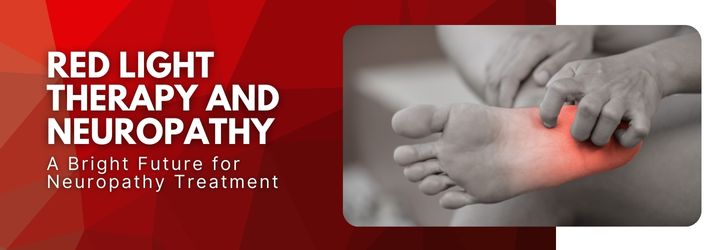Red Light Therapy and Neuropathy in Columbia TN
Red light therapy and neuropathy

Neuropathy, a condition marked by nerve damage and dysfunction, affects millions of people worldwide, often causing chronic pain, numbness, and weakness. As researchers continue to explore novel approaches to manage neuropathy symptoms, red light therapy has emerged as a promising treatment option. In this article, we will delve into the recent advancements in red light therapy and its potential in neuropathy treatment.
Understanding Red Light Therapy
Red light therapy, also known as low-level laser therapy (LLLT) or photobiomodulation, is a non-invasive treatment that uses specific wavelengths of light to stimulate cellular healing and reduce inflammation. The therapy works by exposing affected areas to red or near-infrared light, which penetrates the skin and is absorbed by cells. This process triggers a cascade of cellular events, promoting healing and reducing pain and inflammation.
Advancements in Red Light Therapy for Neuropathy
As research on red light therapy has expanded, several advancements have been made in its application for neuropathy treatment:
- Enhanced understanding of treatment parameters: Researchers have made significant strides in understanding the optimal treatment parameters for red light therapy, including wavelength, intensity, and duration. This knowledge allows clinicians to tailor treatments more effectively to individual patients, maximizing therapeutic outcomes.
- Development of portable and home-use devices: The availability of portable and home-use red light therapy devices has made treatment more accessible to patients. These devices enable individuals to receive therapy at their convenience, improving adherence to treatment protocols and potentially enhancing outcomes.
- Integration with complementary therapies: Combining red light therapy with other treatments, such as physical therapy, massage, and acupuncture, can improve the overall effectiveness of neuropathy management. This integrative approach allows for a more comprehensive treatment plan, addressing multiple aspects of neuropathy simultaneously.
- Expanding research on nerve regeneration: Several studies have demonstrated the potential of red light therapy to promote nerve growth and repair, suggesting that the therapy may not only alleviate neuropathy symptoms but also reverse some of the underlying nerve damage.
Clinical Trials and Studies on Red Light Therapy for Neuropathy
Numerous clinical trials and studies have demonstrated the efficacy of red light therapy in treating neuropathy:
- Diabetic neuropathy: In a study published in the Journal of Pain Research, red light therapy was shown to significantly reduce pain, numbness, and tingling in patients with diabetic neuropathy. Furthermore, the treatment was well-tolerated, with no reported adverse effects.
- Chemotherapy-induced peripheral neuropathy: A study published in the Journal of Cancer Survivorship found that red light therapy significantly reduced pain and improved quality of life in cancer survivors suffering from chemotherapy-induced peripheral neuropathy.
- Idiopathic neuropathy: A case series published in the journal Photomedicine and Laser Surgery reported significant improvements in pain and nerve function in patients with idiopathic neuropathy after receiving red light therapy.
The advancements in red light therapy represent a bright future for neuropathy treatment. As research continues to expand our understanding of this non-invasive therapy, patients and healthcare providers alike can benefit from its potential to alleviate pain, promote nerve regeneration, and improve the overall quality of life. While red light therapy is not a one-size-fits-all solution, its growing prominence in the field of neuropathy management highlights its potential as a valuable tool in the ongoing quest to improve patient outcomes and well-being.



